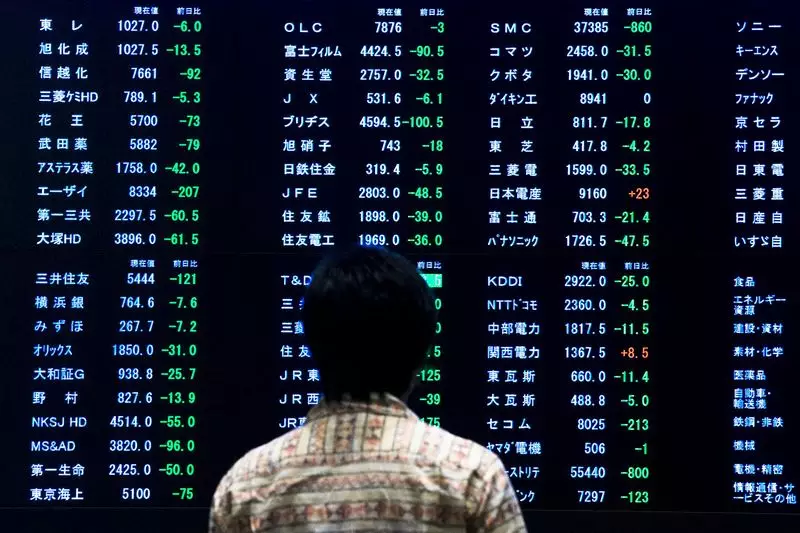As central banks around the world navigate the complexities of post-pandemic economic recovery, interest rate adjustments have become pivotal in shaping market behavior. Recent decisions from the U.S. Federal Reserve have had a profound impact on Asian stock markets, showcasing a clear correlation between U.S. monetary policy and regional economic performance. This article delves into the recent developments in Asian stocks, focusing on the implications of an interest rate cut by the Federal Reserve, alongside reactions from Japan and China.
The Federal Reserve’s decision to cut interest rates by 50 basis points has been met with enthusiasm from investors, catalyzing significant gains on Wall Street. The S&P 500 and Dow Jones Industrial Average both achieved record highs, underscoring the positive sentiment enveloping U.S. markets. This momentum inevitably spills over into Asian markets, as illustrated by Friday’s trading activity, where a majority of stocks reflected an upward trend. The easing of monetary policy is typically seen as a sign of support for economic growth, encouraging risk-taking behavior among investors across various regions.
In Asia, Japan’s market performance stood out, particularly with the Nikkei 225 Index rising by 1.8%. However, this was accompanied by a tempered outlook as the Bank of Japan (BOJ) opted to hold interest rates steady. While this decision was largely in line with market expectations, it did indicate that the BOJ is projecting a rise in inflation. The complexity of the situation was heightened by Japan’s recent consumer price index (CPI) data, which showcased a ten-month high—a signal of a recovering economy. Nevertheless, despite the apparent positives, the BOJ’s cautious stance suggests a balancing act between supporting growth and addressing inflationary pressures.
Conversely, Chinese markets exhibited a more subdued response. The Shanghai Shenzhen CSI 300 and the Shanghai Composite indexes edged lower, failing to rally as expected. The People’s Bank of China (PBOC) chose not to alter its benchmark lending rate, a decision that drew criticism amid growing calls for enhanced stimulus measures. In July, the PBOC had made the bold choice of cutting the loan prime rate, aiming to stimulate consumer spending. However, lingering deflationary concerns and weak economic indicators have tempered investor enthusiasm for Chinese stocks. The contrast between Japan’s cautious optimism and China’s tepid momentum emphasizes the divergent paths taken by these two major economies in response to external stimuli.
Highlighting the broader regional dynamics, South Korea’s KOSPI index benefited from the global upswing in technology stocks, rising by 0.8%. Additionally, Hong Kong’s Hang Seng index reported an impressive increase of 1.3%, buoyed by similar gains in the tech sector. These performances reflect an overarching trend where technology companies are increasingly viewed as safe havens amid fluctuating macroeconomic conditions.
Australia’s ASX 200 also demonstrated resilience, marking a modest gain of 0.3% and reaching an all-time high earlier in the session. Such advancements are indicative of the positive spillover effects from the U.S. markets, suggesting that lower interest rates globally have relieved some liquidity constraints, empowering investors to take on more risk in their portfolios.
As evident from the week’s trading sessions, the interplay between U.S. monetary policies and Asian market responses underscores a complex web of market dynamics. While interest rate cuts can stimulate both investment and consumption, the varied responses from Japan and China point to different economic realities and challenges. The path forward will likely require careful navigation, with policymakers needing to weigh the benefits of sustaining growth against the risks of inflation and economic imbalances. For investors, the current landscape necessitates a vigilant approach, as the potential for volatility remains high amidst these shifting economic tides.

